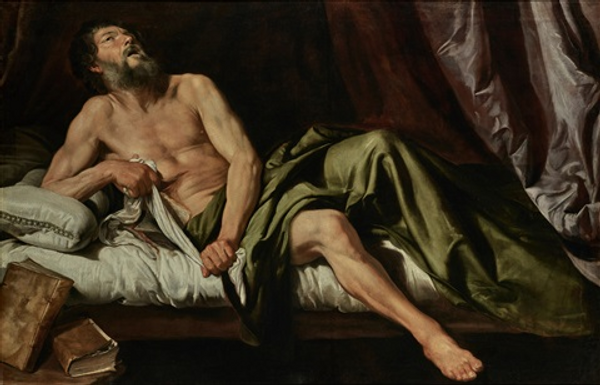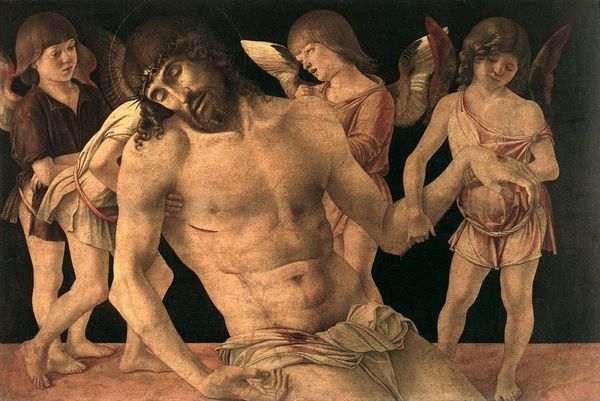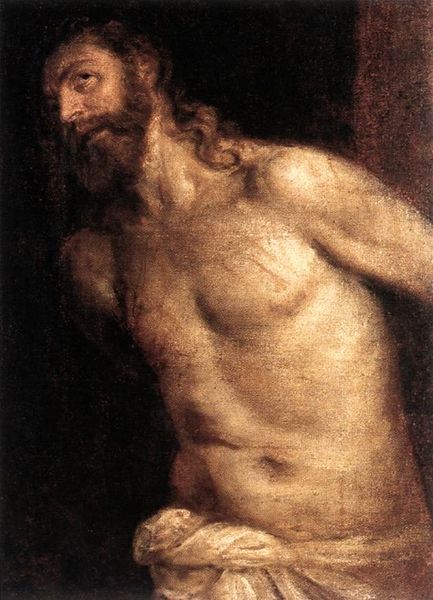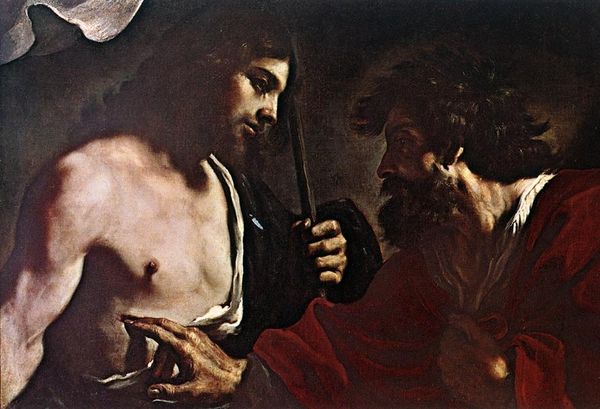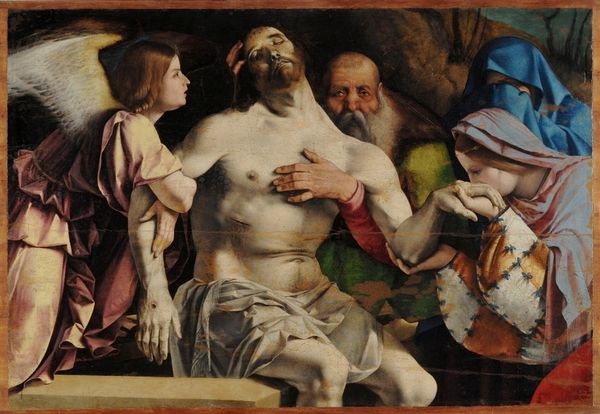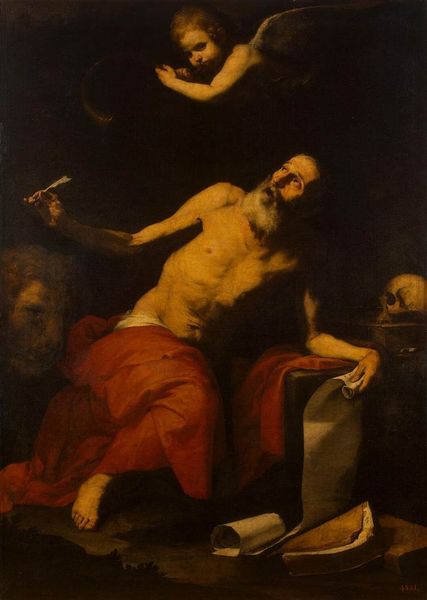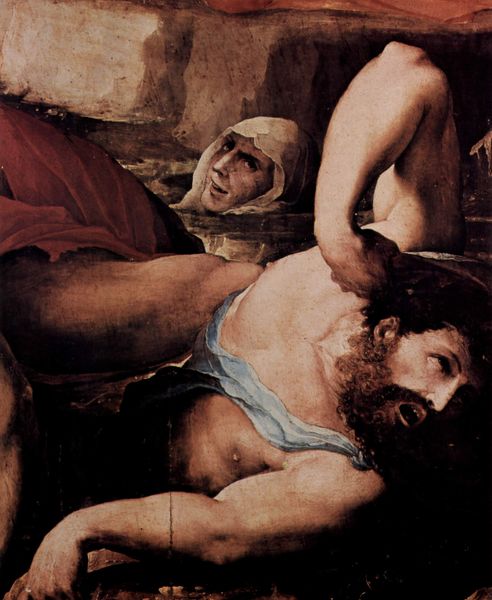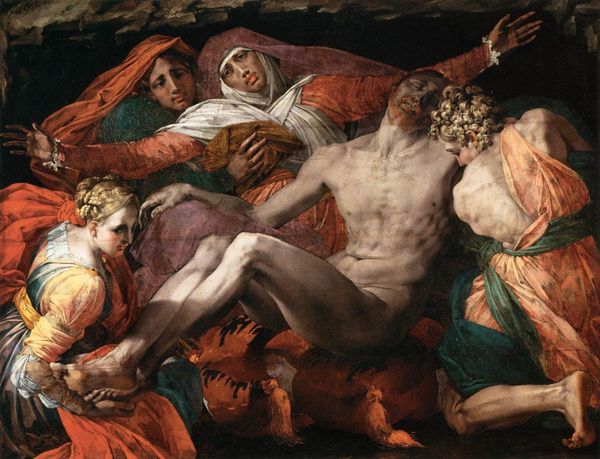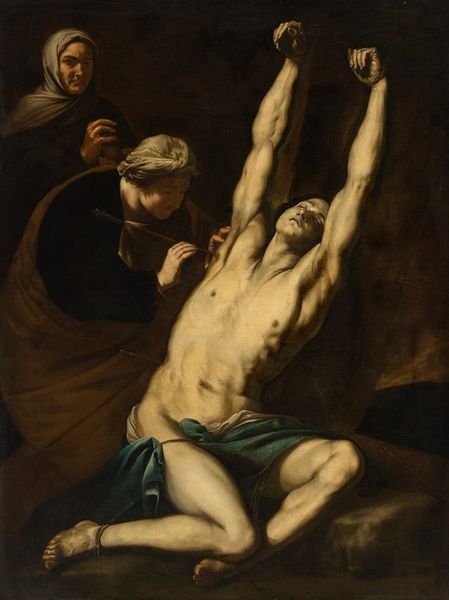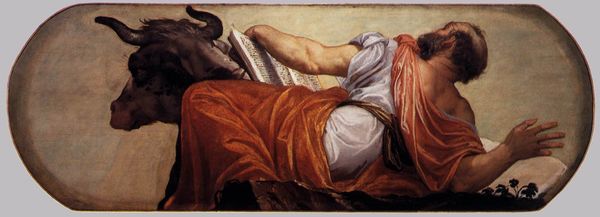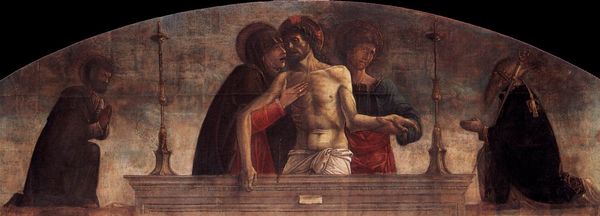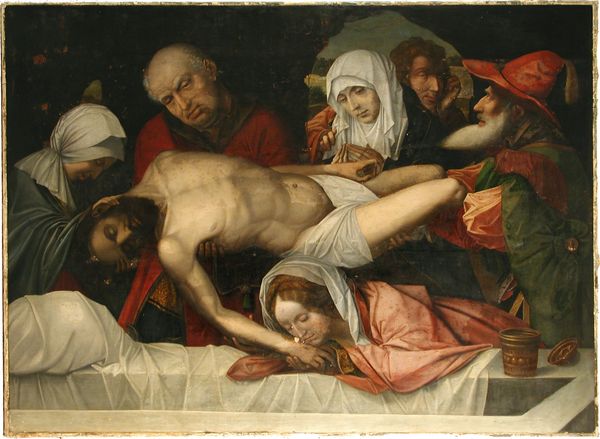
Dimensions: 36 x 136 cm
Copyright: Public domain
Curator: Oh, it just *aches*, doesn't it? This grief practically vibrates off the canvas. Editor: Indeed. We're looking at Matthias Grünewald’s "Lamentation of Christ," painted around 1525. An oil painting that encapsulates not just sorrow but the social role of imagery. Curator: It's the darkness, I think. Not just literally dark, but a spiritually dark. This isn't your airy Renaissance lamentation. This is earthy, heavy…real. I feel like I’m standing at the foot of the cross. And that elongated body...it’s almost grotesque, like a wound refusing to close. Editor: Precisely, Grünewald subverts expectations. Consider the context. He painted this during the Reformation, a time of religious and social upheaval. This isn’t just a personal mourning; it's a visual commentary on the suffering of the masses. See how the aristocratic coats of arms on either side frame the scene, a sort of elite containment of Christ's suffering? It raises the question, who benefits, and who suffers within such displays? Curator: Interesting point! I was so caught up in the raw emotion of the thing. But it does make you wonder about the painting's patronage and intended audience, doesn't it? Still, that stark realism…look at the coloring, almost cadaverous. The green tints in his skin, the stiffness of his pose. It’s not idealized beauty; it's visceral human decay. And that hand reaching down, the pale fingers almost tentative. There is so much vulnerability, you can feel the deep ache and need of the loved ones. Editor: The historical reception certainly oscillated. Early interpretations, aligned to institutional readings of the crucifixion narrative; then twentieth-century art historians read it within the frame of German Expressionism. Both are viable, but these tell of social and ideological transformations around ways of viewing, around access to these powerful religious symbols. Curator: It’s a potent and brutal piece. This wasn’t designed for polite courtly viewing. It hits you square in the gut. A powerful demonstration of the power of painting. Editor: Yes. And a demonstration of how art can hold a mirror up to society, reflecting back its own contradictions.
Comments
No comments
Be the first to comment and join the conversation on the ultimate creative platform.

